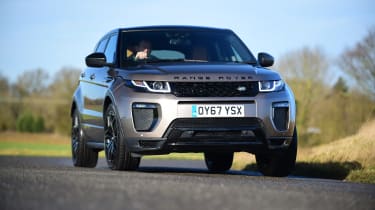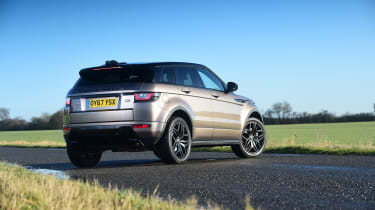Range Rover Evoque (2013-2019) review – with once exotic style now familiar, does the Evoque still have what takes? - Engine and Gearbox
Concept car looks and a luxurious interior compensate for some less than inspiring handling
The current model Evoque has integrated the latest JLR engine architecture, the all-aluminium range of 2-litre ‘Ingenium’ four-cylinder diesel engines.
The EU6-compliant turbodiesels are available in three power outputs, the least gutsy producing 147bhp at 3500rpm and generating 258lb ft of torque at 1750 rpm, with the range topping SD4 managing 237bhp and 369lb ft at 4000rpm and 1500rpm respectively.
All three of these engines are smooth and responsive, with minimal audible intrusion on the cabin, a wide-open throttle aside. A potential 67.3mpg from the 147bhp engine version isn’t a bad return, either.
The petrol Si4 derivatives are too a product of JLR’s recent engine upheaval and are two of the most powerful in the Evoque lineup. Neither can replicate the frugality of the diesels, returning less than 39mpg on a combined cycle and emitting up to 185g/km of CO2.
The rare few who seek more rugged capabilities of their Evoque will have to equip the automatic nine-speed transmission in order to tag on All-Terrain Progress Control, to tackle diverse, off-road environments. The six-speed manual is the only other transmission, available for the two lesser diesel models.
The imprecision of the manual gearbox and the slightly rubbery throw makes the ZF auto is the best default choice for the Evoque. Not only does it suit the engine’s power and torque delivery better, but with more ratios stationing you in the meat of the torque more often response is improved too.
The addition of the Ingenium engines has also extended the Evoque’s service intervals from 16,000 to 21,000 miles.



